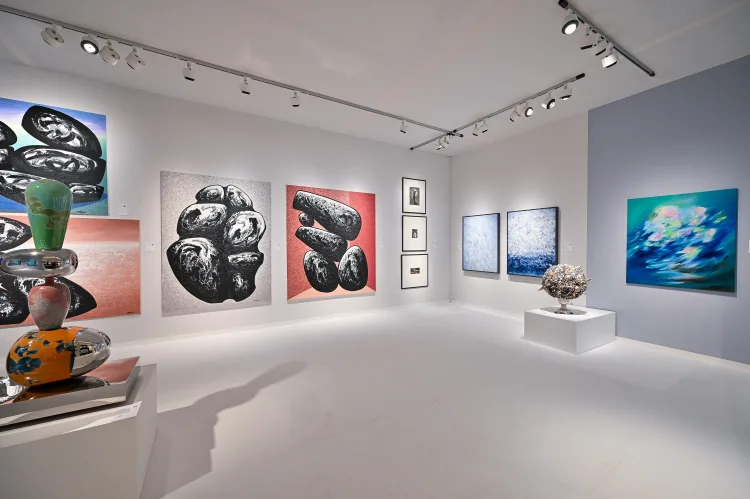
Entering the fully-carpeted Treasure House Fair 2024 — the second edition of its kind in London — one is greeted with an aura of splendor, sophistication, gravitas and elitism.
The double in-and-out security checks speak volumes about the value of the treasure troves exhibited by 70 of the world’s top art dealers. If the proudly glazed quaint furniture, regally gleaming clocks that will outlast time, and the conspicuously large and rare gemstones weighing over 100 carats, along with their exorbitant price tags, dazzle a visitor but threaten to deplete their wallets, they would likely stop in their tracks at the no-frills, demure fine art gallery.
Here, the paintings hum in an unpretentiously mellow tone, yet are powerful enough to beckon art connoisseurs.
The Hong Kong 3812 Gallery — the would-be new kid in London’s well-heeled The Whiteley landmark — told its Chinese art narrative with Western spins, a miniature of the East-West art dialogue unfolding on a global scale.
The refrain sung by the gallery, representing artists from both Hong Kong and the Chinese mainland, is “Eastern Origin & Contemporary Expression” — an overarching conceit conjured by the gallery’s co-founder, Calvin Hui.
A series of group exhibitions, entitled Mind-Scape following the concept, offered a glimpse of the possibilities of art in flattering the literal natural landscape, thanks to humans’ cognitive and emotional connection to the natural elements.
On an equal measure, the exhibition reflected the spiritual and emotional void in many Chinese contemporary artworks churned out by lamely imitating Western art to cater to an ever more globalized world.
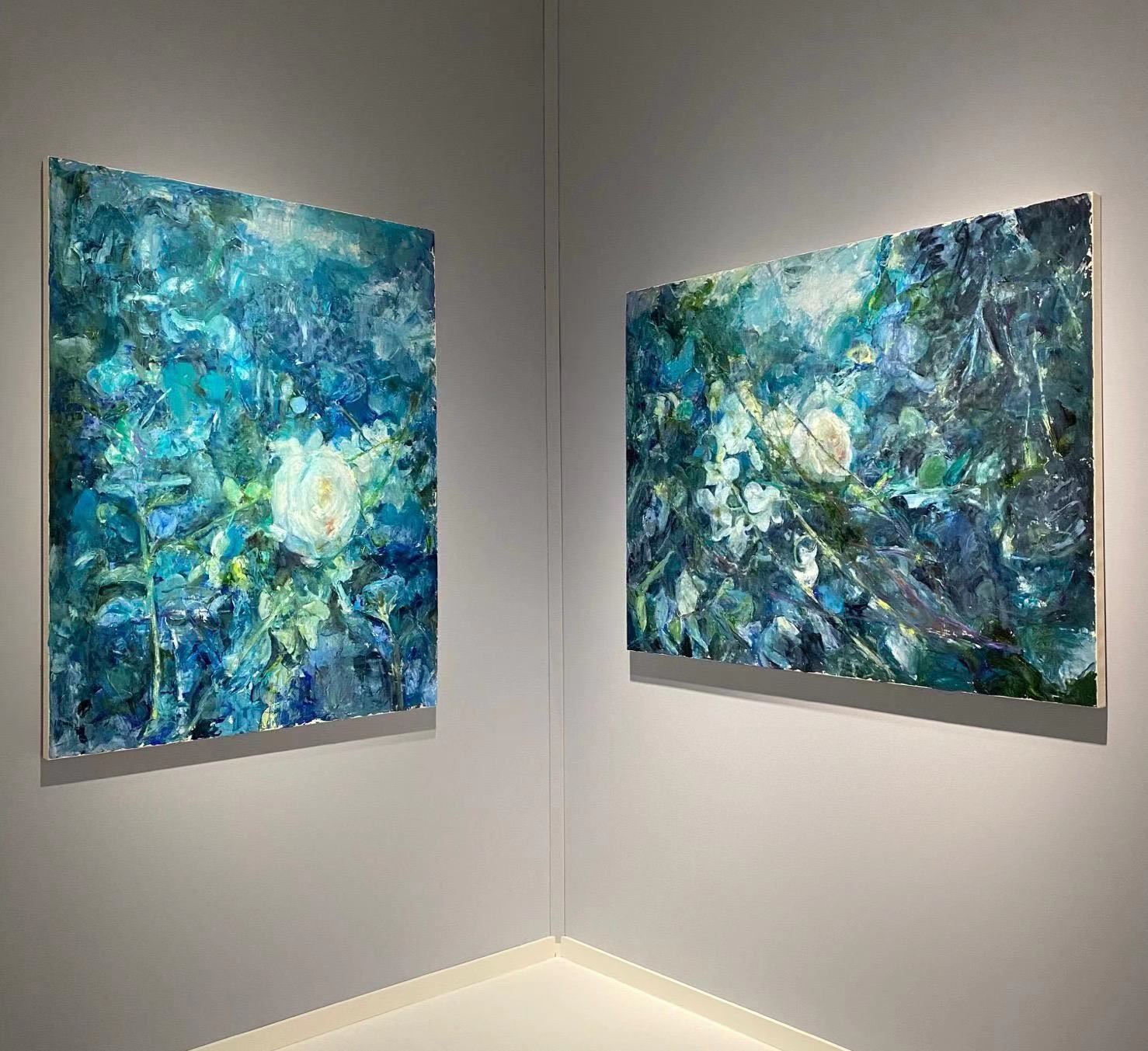
It evoked the dire need for artists to revisit and carry on with Chinese and Eastern art traditions and essence, to infuse the zeitgeisty rhythm of life into art to let its modernity sing, resulting in a unique and updated tenor in Chinese art expression and language distinguishable from the Western abstract painting, but still highly resonant with Western and Eastern audiences.
Such a concept has become a common thread infiltrating the curations and campaigns initiated by Hui, placing a high premium on maintaining the “distinctive language and spirit of Eastern art, or Chinese art, in particular”, regardless of the sprawl of globalization, through which the artistic and cultural boundaries have been reduced to a blur.
READ MORE: Golden age of forging connections
In a nutshell, Hui doesn’t want to see the unique voice of Chinese art drowned out by the chorus of globalization and losing its sheen as a result.
Instead, he hopes the “Easternness” will outlive the powerful dynamic of globalization where artistic languages are in danger of losing their identity.
Perpetuating throughout Hui’s curating approach and as the core narrative in any of his audience’s engagement initiatives, the “Easternness” in the represented artists’ works has to speak for itself with assured pride, and bear the flexibility and mutability that allows art collectors from varying cultures to interpret it in a personalized way, says Hui.
That’s to say the artworks he selectively collects and exhibits have two common traits — highly Eastern and receptively worldly — the former informed by Chinese artistic traditions and the latter inspired by the artists’ international and inventive virtues.
Liu Guofu’s mesmerizing oil on canvas work in his Flower series, showcased at the fair, manifests itself as a semblance of a rough sea, sucking viewers’ gaze into the feather-like petals. It turns out that his inspiration stems from the “Eastern practice of painting on a cracked wall with silk, observing and envisioning natural patterns and Western influences, such as Leonardo da Vinci’s fascination with water flow,” says Liu.
“Through abstract pictorial language and skillful transformation, I’ve created a painting that merges human imagination with the universe, resulting in a vibrant and natural representation,” he says.
To Liu, neither the Eastern cultural influence nor the Western equivalent alone would do justice to what he has been looking to wax lyrical about — “a sense of interconnectedness and harmony”.
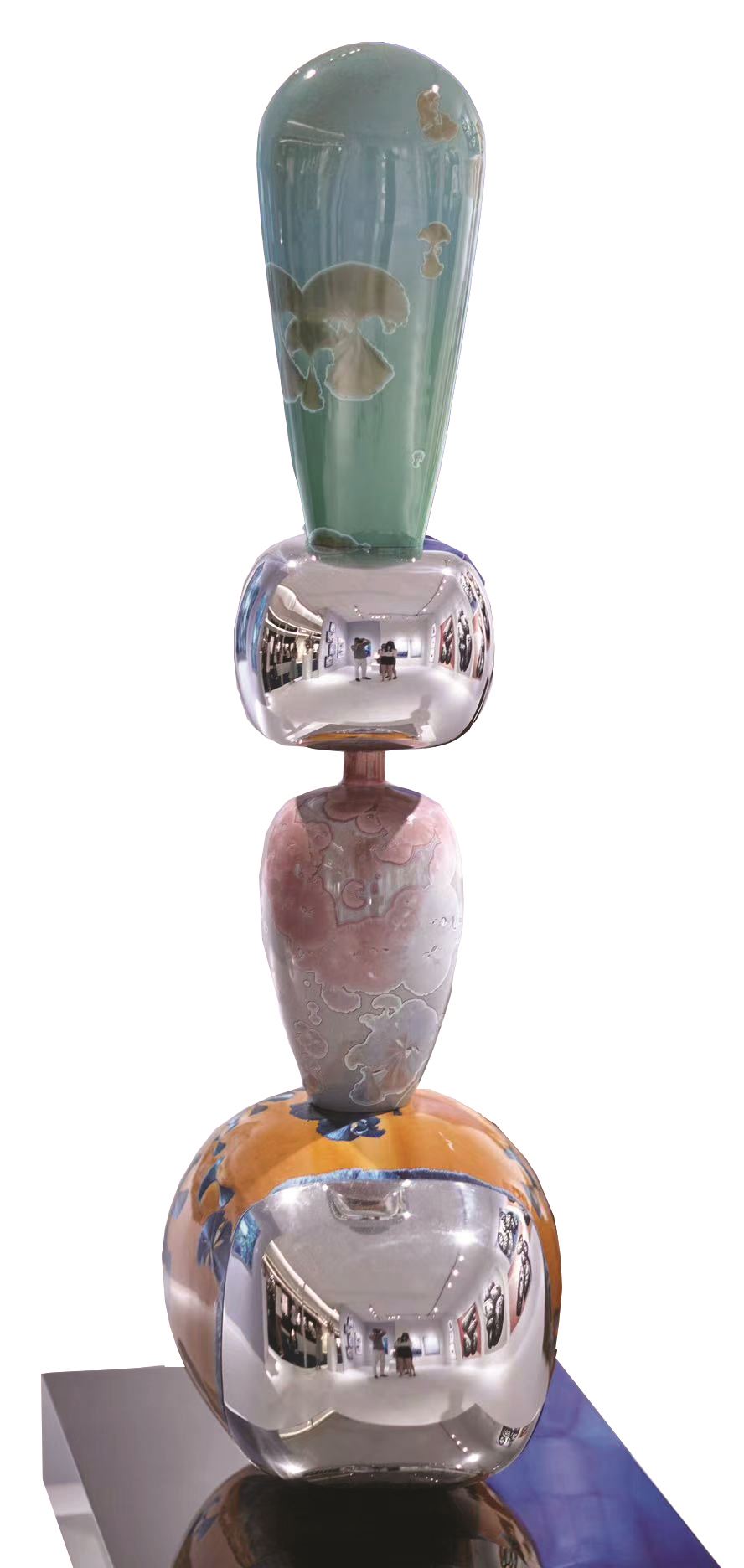
Fusing cultural aesthetics
Chinese artists’ resourcefulness and envelope-pushing readiness to absorb the bounties from Western aesthetics decide the nuanced interpretations of their finished works, subject to “the beholder’s personal experience, religious beliefs and understanding of Eastern art”, says Hui.
“Personal experience plays no small part in admiring an artwork,” he contends. Anyone who has experienced the kind of emotions they assume the artist is trying to communicate could find an affinity and empathetic resonance in the artwork, while those leading a life a world removed from that of the artist are likely to view the artwork completely differently; the onlooker of Catholic faith when seeing Thomas Ngan’s works could bond with the art over the spiritual influences that are palpable to them, while a secular beholder could be equally captivated but, by their narrative, tailored to their nonreligious perspectives.
“Look at the stones he depicted in the series. How would you interpret it if you were a Chinese? The qualities conjured up in mind would be ‘resilience’, ‘will power’, ‘stoic’ and, maybe, ‘lasting’. But, what if you’re Western cultured with little exposure to Eastern and Chinese connotation to stones.
You might feel the vigor through the enduring and tough nature of the stone and the nature in general,” says Hui, referring to Ma Desheng’s works displayed at the fair. “What binds the artists’ works in this room together (the treasure fair) is not the precision of their brushwork or the exquisite harmony of their color palettes. Rather, the unifying thread is a sense of spirituality emanating from the artists themselves, transcending the technical aspects of their craft.”
“It’s tempting for Western audiences to associate Thomas’ art with post-impressionism at first glance,” says Hui, pointing at the color of the millennial young Hong Kong artist’s iconic oil in his linen work Just Right.
The expressive smudges of the green leaves and alternating shades of blue, punctuated by pristine white blossoms and hardened prickly branches like exerting arms, create a striking visual tension and evocative wilderness, thanks to the impasto strokes, which altogether mirror Vincent van Gogh’s Starry Night.
READ MORE: Get immersed in Europe’s finest
This comparison drawn between Ngan’s and the Western impressionist is not unreasonable, if we get to know Thomas’ religious belief has effectively embellished his originally Eastern art with Western impressionist mystics.
“I learn everything about structure and graphic, as well as the perspectives of East and West so I can have more ways to cut through reality, outer and inner,” says Ngan.
Glistening ceramics and polished stainless steel have become an iconic recurring combo defining Chinese artist Li Hongwei’s installations.
Li first seriously dabbled in sculpture art from the Central Academy of Fine Arts in Beijing and honed his flair in New York.
The plump ceramic bodies, decked out with either regular floral patterns or spontaneous water color prints, alternate with the sterile sumptuous stainless steel parts in tribute to the fusion of “Chinese antiquity and industrial modernity prevailing first in the West,” says Hui.
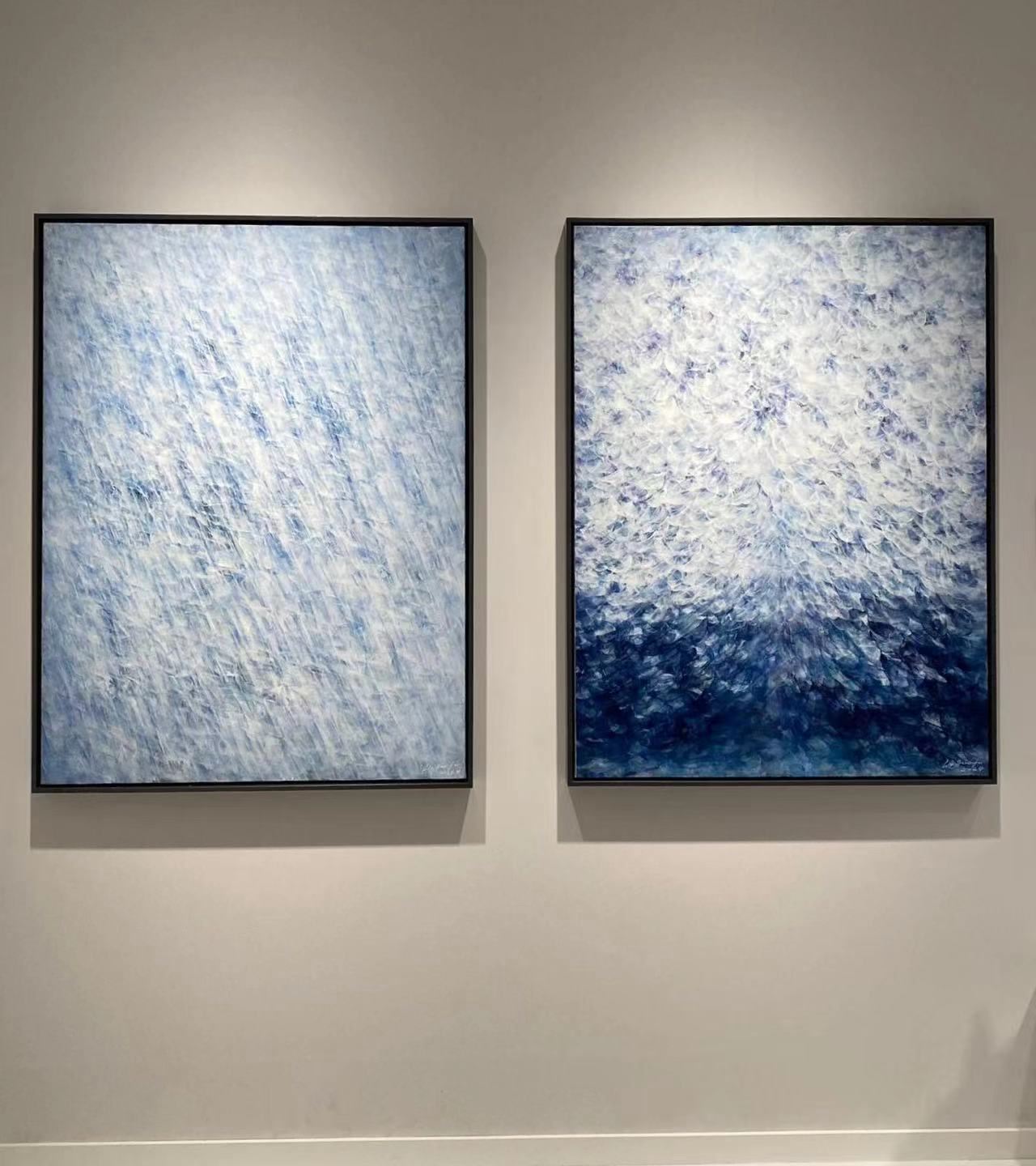
The exquisite meshing of the East and West in art could be the most vivid testament to Li’s eclectic ethos that isn’t nature, but nurtured from his conscious and unconscious contextualization of the Chinese venerable past into the contemporary scene.
“The marriage of ceramic and stainless steel in my work symbolizes the fusion of tradition and modernity, reflecting my experiences in and outside China.
Ceramics, rooted in Chinese heritage, brings warmth and history, while stainless steel represents modern innovation,” explains Li.
“This harmony transcends cultural boundaries and speaks to the shared human experience.” Each piece displayed at the gallery’s pavilion conveys a heightened plane of consciousness and inner contemplation unique to the individual creator.
It’s this deeply personal, transcendent quality that elevates the artwork, speaking to the viewer on a profoundly spiritual level that goes beyond the physical manifestation on the canvas, says Hui. “The true power of these works lies in their ability to transport the audience to the realms of self-reflection and introspection — a spiritual resonance that supersedes the outward polish of the artists’ techniques.”
In a Chinese artist’s creation, the juxtaposition of Eastern or Chinese artistic uniqueness, and the open mindedness in encompassing the West are a rich seam to mine, says Hui.
It’s liberating for both the artist and the audience in that “the artist, by pushing the confines of traditions, finds the extended arm of their artistic languages and license which, in turn, affords audiences the freedom to give their one-of-a-kind interpretation of the art”.
“Contemporary art is appreciated not only for its beauty per se, but for its power of bringing out inspirations that could enhance humanity and personal life fulfillment.
The beauty of contemporary art lies in its depth and width allowed for communication, interaction and cross pollination transcending cultural differences,” says Hui.
The existence of contemporary art, as a cultural product of the zeitgeist globalization, expands the avenue for communication and ideological exchanges in the political, societal, cultural, religious and individual spheres.
The visual and cerebral shocks don’t have to be “provoking” or “over-stimulating”, but are seeping through people’s consciousness in a gentle chronic manner, argues Hui.
READ MORE: Through a new lens
Is there any trick for artists to protect themselves from being drowned out by the increasingly homogeneous aesthetic mainstream? “Yes, be offbeat, keep your distinctiveness” is his advice. How is it possible to make a work of art stand? “It has to be built on the foundation of an artist’s originality and ingenuity” that blossom from the root of traditional aesthetics and techniques, says Hui.
The “uniqueness” and singularity are the very premise or prompt for a discourse to start, but are far from enough to allow the artwork a far reach, he argues. “An artwork could stand out and stand tall only if it’s elevated to acquire an international and contemporary streak, to be ‘inclusive’, ‘interactive’ and communicable across different cultures.”
Rising young talents
But the East-West trope is by no means a preserve for old established Chinese artists. The juxtaposition of Eastern roots and Western influences has been a recurring theme in the yarn by emerging young artists from the Chinese mainland and Hong Kong.
Clinging on to their Eastern identity while intrepidly experimenting with diverse mediums, genres and “vernaculars” borrowed from Western art, young artists have taken the initiative to push the envelope, as well as aesthetic and cultural boundaries, Agnes Wu, the gallery manager and curator, observes from the young budding Chinese artists the 3812 Gallery represents.
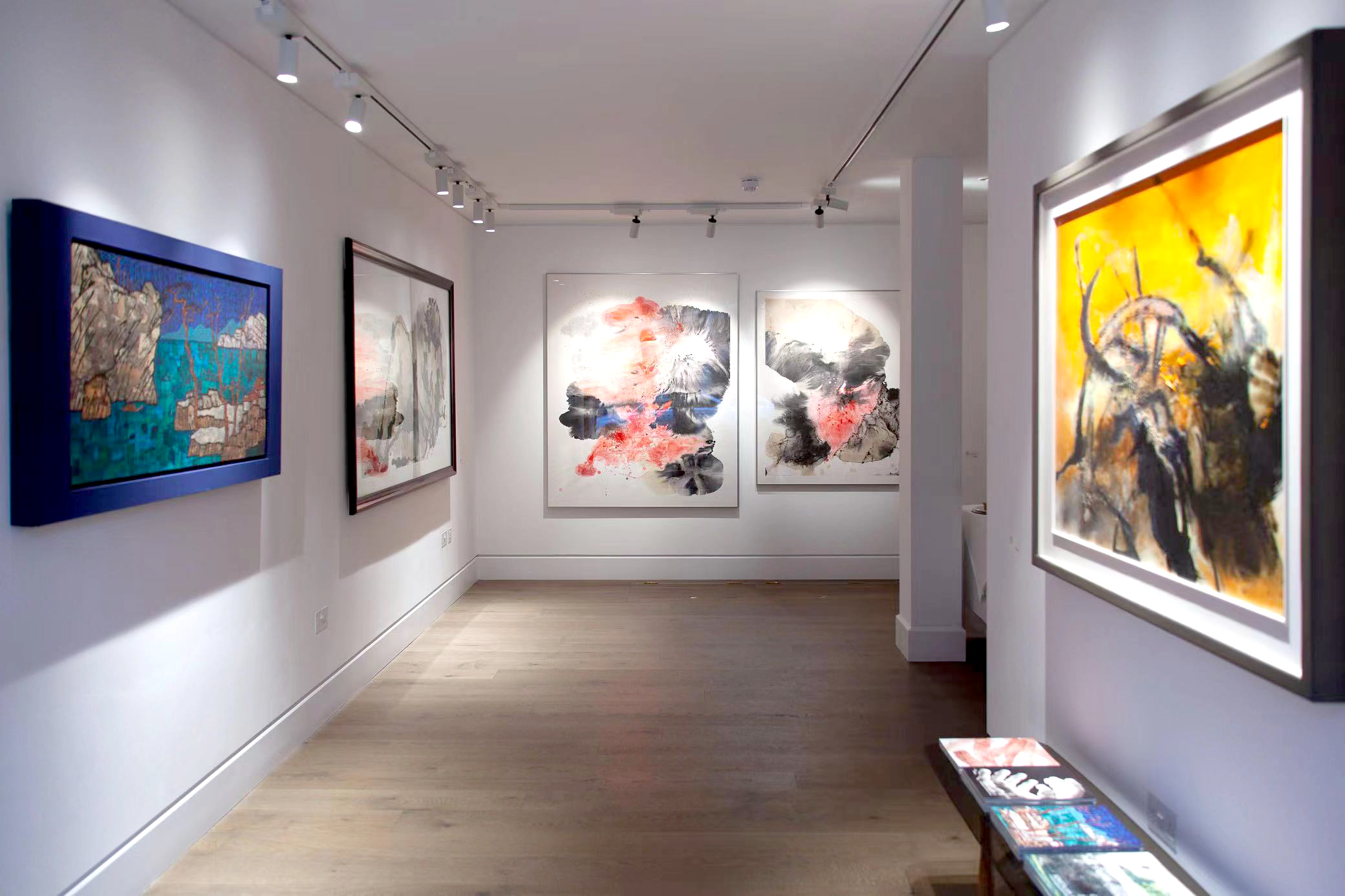
A one-month debut exhibition, Seeking Connections of Ya! Young Art program, was held at 3812’s Hong Kong gallery from January, featuring artworks by five budding artists from the Hong Kong and Macao special administrative regions. Speaking of the Ya!
Young Art initiative — Hui’s brainchild — Wu recalls that the idea blossomed when she talked with one of the featured Hong Kong millennial artists, Joanne Chan, who was deflated by the intimidating reality facing all but fledging artists — the lack of visibility in the crippling elitism industry. After graduating from the prestigious University of the Arts London and returning to her home city, Hong Kong, Chan was ready to flex her artistic muscle only to be jolted into realizing the mismatch between emerging artists’ fervor and the cold shoulder from the oversaturated market.
“Growing up in Hong Kong, I’ve been instilled with the notion that fame only comes after the death of an artist, which serves as a harsh warning to everyone who sets their sights on breaking into this industry,” says Chan.
Studying art in London before moving back to Hong Kong, she recalls the Western art world having broadened and challenged her understanding shaped by traditional schooling.
While Hong Kong has nursed its cachet of “kaleidoscopic” multiculturalism well, the long-standing hindrance for Hong Kong artists is the city’s “small market”. The Ya! Young Art idea came into being as an embracing vehicle for committed artists to channel their “acquired horizon views and voices” after their crucible in both local and Western art environments, says Wu.
“We set the artists’ age at 35 and below because they are likely to have dipped their toe into the industry for some time and stuck it through despite some futilities.
It speaks loudly of their determination, perseverance and intact passion.” Thus, it won’t be hard seeing the Chinese fledging artists becoming the maestro helming the art orchestra co-played by Eastern and Western tenors at home and abroad.


